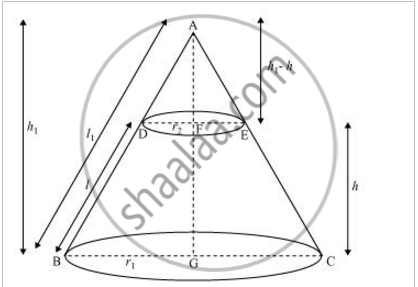Topics
Number Systems
Real Numbers
Algebra
Polynomials
Pair of Linear Equations in Two Variables
- Introduction to linear equations in two variables
- Graphical Method
- Substitution Method
- Elimination Method
- Cross - Multiplication Method
- Equations Reducible to a Pair of Linear Equations in Two Variables
- Consistency of Pair of Linear Equations
- Inconsistency of Pair of Linear Equations
- Algebraic Conditions for Number of Solutions
- Simple Situational Problems
- Pair of Linear Equations in Two Variables
- Relation Between Co-efficient
Quadratic Equations
- Quadratic Equations
- Solutions of Quadratic Equations by Factorization
- Solutions of Quadratic Equations by Completing the Square
- Nature of Roots of a Quadratic Equation
- Relationship Between Discriminant and Nature of Roots
- Situational Problems Based on Quadratic Equations Related to Day to Day Activities to Be Incorporated
- Application of Quadratic Equation
Arithmetic Progressions
Coordinate Geometry
Lines (In Two-dimensions)
Constructions
- Division of a Line Segment
- Construction of Tangents to a Circle
- Constructions Examples and Solutions
Geometry
Triangles
- Similar Figures
- Similarity of Triangles
- Basic Proportionality Theorem (Thales Theorem)
- Criteria for Similarity of Triangles
- Areas of Similar Triangles
- Right-angled Triangles and Pythagoras Property
- Similarity of Triangles
- Application of Pythagoras Theorem in Acute Angle and Obtuse Angle
- Triangles Examples and Solutions
- Concept of Angle Bisector
- Similarity of Triangles
- Ratio of Sides of Triangle
Circles
Trigonometry
Introduction to Trigonometry
- Trigonometry
- Trigonometry
- Trigonometric Ratios
- Trigonometric Ratios and Its Reciprocal
- Trigonometric Ratios of Some Special Angles
- Trigonometric Ratios of Complementary Angles
- Trigonometric Identities
- Proof of Existence
- Relationships Between the Ratios
Trigonometric Identities
Some Applications of Trigonometry
Mensuration
Areas Related to Circles
- Perimeter and Area of a Circle - A Review
- Areas of Sector and Segment of a Circle
- Areas of Combinations of Plane Figures
- Circumference of a Circle
- Area of Circle
Surface Areas and Volumes
- Surface Area of a Combination of Solids
- Volume of a Combination of Solids
- Conversion of Solid from One Shape to Another
- Frustum of a Cone
- Concept of Surface Area, Volume, and Capacity
- Surface Area and Volume of Different Combination of Solid Figures
- Surface Area and Volume of Three Dimensional Figures
Statistics and Probability
Statistics
Probability
Internal Assessment
Definition
A frustum may be formed from a right circular cone by cutting off the tip of the cone with a cut perpendicular to the height, forming a lower base and an upper base that are circular and parallel.

Notes

In ΔAFE and ΔAGC
ΔAFE ≅ ΔAGC (Angle-Angle rule)
`"AF"/"AG"= "FE"/"GC"= "AE"/"AC"`
`(h_1-h)/(h_1)= r_2/r_1= (l_1-l)/l_1 `
`(r_2)/(r_1)= (l_1-l)/(l_1)`
`r_2l_1= r_1(l_1-l)`
`r_2l_1= r_1l_1- r_1l`
`r_1l= r_1l_1- r_2l_1`
`r_1l= l_1 (r_1-r_2)`
`l_1= (r_1l)/ (r_1-r_2)` ...........eq1
`(h_1-h)/h_1= r_2/r_1= (l_1-l)/l_1`
`(h_1-h)/h_1= r_2/r_1`
`r_1(h_1-h)= h_1r_2`
`r_1h_1- r_1h= h_1r_2`
`r_1h_1- r_2h_1= r_1h`
`h_1(r_1-r_2)= r_1h`
`h_1= (r_1h)/(r_1-r_2)` ............eq2
1) Curved surface area of frustum= Curved surface area of ABC- Curved surface area of ADE
= `pi r_1l_1- pi r_2 (l_1-l)`
= `pi r_1l_1- pi r_2l_1 + pi r_2l`
= `pi l_1 (r_1- r_2) + pi r_2l`
= `pi r_1/(r_1-r_2) (r_1-r_2) +pi r_2l` (from eq1)
= `pi r_1l + pi r_2l`
Curved surface area of frustum = `pi l(r_1+r_2)`
2) Total surface area of frustum= Curved surface area of frustum + area of the circle above+ area of the circle below
Total surface area of frustum = `pi l (r_1+r_2) + pi r_1^2+ pi r_2^2`
3) Volume of frustum= Volume of cone ABC- Volume of cone ADE
= `1/3 pi r_1^2h_1- 1/3 pi r_2^2 (h_1-h)`
=`1/3 pi r_1^2h_1- 1/3 pi r_2^2h_1+ 1/3 pi r_2^2h`
= `1/3 pi h_1 (r_1^2- r_2^2) +1/3 pi r_2^2h`
= `1/3 pi (r_1h)/(r_1-r_2) (r_1^2-r_2^2)+ 1/3 pi r_2^2h` (from eq2)
= `1/3 pi (r_1h)/(r_1-r_2) (r_1-r_2) (r_1-r_2)+ 1/3 pi r_2^2h`
= `1/3 pi r_1h (r_1+r_2)+ 1/3 pi r_2^2h`
= `1/3 pi h [r_1 (r_1+r_2)+ r_2^2]`
Volume of frustum= `1/3 pi h (r_1^2+ r_2^2+ r_1r_2)`
Example- Hanumappa and his wife Gangamma are busy making jaggery out of sugarcane juice. They have processed the sugarcane juice to make the molasses, which is poured into moulds in the shape of a frustum of a cone having the diameters of its two circular faces as 30 cm and 35 cm and the vertical height of the mould is 14 cm. If each `cm^3` of molasses has mass about 1.2 g, find the mass of the molasses that can be poured into each mould. `(Take pi= 22/7)`
Solution : Since the mould is in the shape of a frustum of a cone, the quantity (volume) of molasses that can be poured into it = `pi/3 h(r_1^2+ r_2^2+ r_1r_2)`
where `r_1` is the radius of the larger base and `r_2` is the radius of the smaller base
=`1/3 xx 22/7 xx 14 [(35/2)^2+ (30/2)^2= (35/2 xx 30/2)] cm^3`
It is given that `1 cm^3` of molasses has mass `1.2g.` So, the mass of the molasses that can be poured into each mould = `(11641.7 xx 1.2) g`
= `13970.04 g = 13.97 kg = 14 kg ` (approx.)
